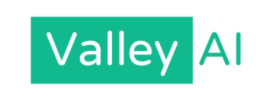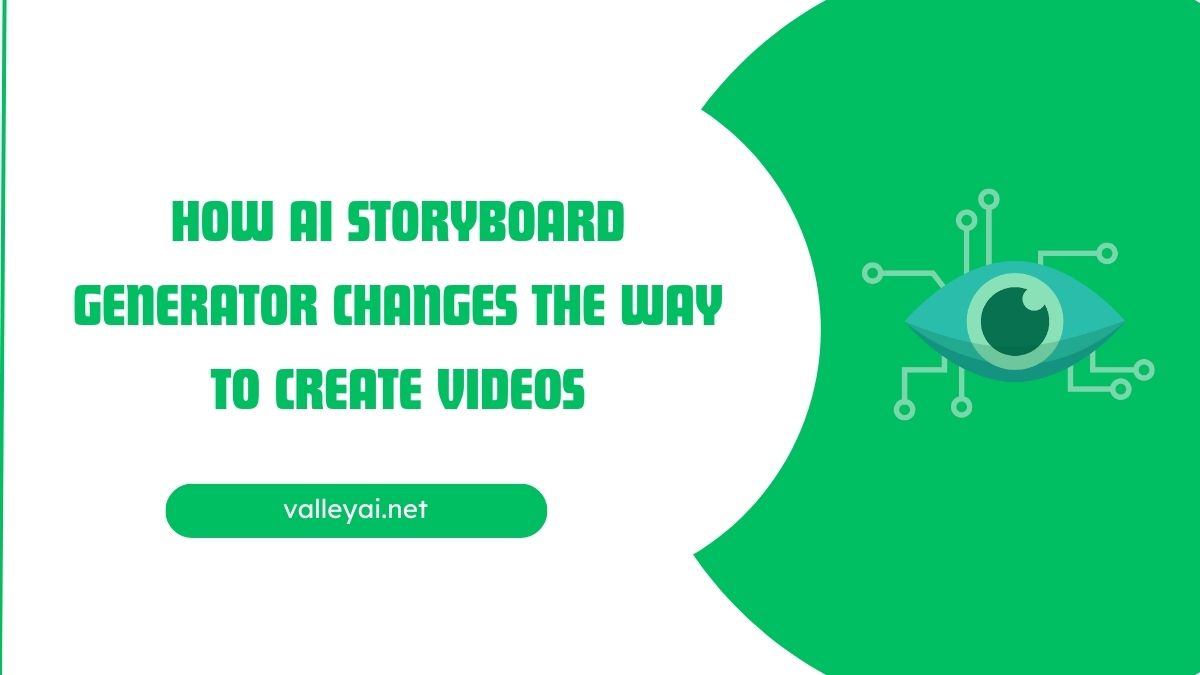Change happens all the time, and in recent years, there have been a lot of changes in how videos are made. With many new tools and technologies out there, video agencies now do things differently than they did in the past.
Let’s take a look at how things used to be and how they are now, focusing on a tool that makes a big difference: the AI storyboard generator.
Then: Traditional Video Production Process
Pre-production Phase
Conceptualization of Video Ideas
In the traditional video production process, the journey kicks off with a good old brainstorming session. This entails the team jotting down ideas on paper, sticking colorful notes, or sketching concepts on a whiteboard. The aim is to collectively think about the message, style, and overall concept that the video will convey to its audience, merging all these ideas from the team into a cohesive vision.
Scriptwriting and Planning
Once the ideas are solidified, the next step is to create a script, traditionally written on paper or typed out using a typewriter. This script serves as the blueprint for the video, outlining the dialogue, scenes, and essential details. Planning extends beyond the creative aspects to organizing logistics, such as locations, props, and the overall schedule for shooting.
Storyboarding Process
Manual creation of storyboards
Storyboards act as a visual roadmap for the video. Traditionally, these storyboards are created by hand, with artists sketching out each scene using simple tools like pen and paper. These sketches provide a sequential representation of how the video will unfold, helping everyone involved in production understand the director’s vision.
Collaboration among team members in visualizing the narrative
The creation of storyboards is a collaborative effort. Team members, including directors, cinematographers, and producers, work together to visualize the narrative. This collaborative process ensures that everyone is on the same page regarding how the video will look and feel, promoting a unified vision.
Challenges in Traditional Storyboarding
- Time-Consuming Nature of Manual Storyboarding
One significant challenge in traditional storyboarding lies in its time-consuming nature. Creating storyboards manually requires artists to meticulously sketch out each frame, which can be a slow and labor-intensive process. As a result, this can extend the overall timeline of the video production, delaying the project’s completion.
- Resource-Intensive Processes and Associated Costs
Traditional storyboarding methods often demand a considerable amount of resources, both in terms of skilled personnel and physical materials. Hiring skilled artists to manually create storyboards can be costly, and the need for materials such as paper, pens, and drawing tools contributes to additional expenses. These resource-intensive processes can strain a project’s budget.
- Potential for Creative Limitations Due to the Manual Nature of the Process
The manual nature of traditional storyboarding might introduce limitations to the creative process. Artists are bound by the constraints of their tools, and revisions or modifications to the storyboard can be cumbersome. This limitation may hinder the exploration of alternative creative ideas, potentially leading to a less dynamic or innovative final product.
Now: Transition to AI Storyboard Generators
In today’s fast-paced video production industry, agencies face constant change and high expectations. The industry’s dynamic nature means trends and preferences shift swiftly, requiring adaptability. With clients seeking speedy deliveries without compromising quality, agencies feel the increasing demand for quicker turnarounds. To stay competitive, embracing technological advancements becomes a necessity.
This is not just about keeping up but about thriving in an environment where staying ahead means meeting the twin demands of speed and quality, making technological evolution an essential aspect of agency survival and success.
With this, many video agencies are adapting to the AI world by utilizing various AI tools, especially AI storyboard generators. Here’s why:
Benefits of AI Storyboard Generators
- Efficiency Boost: AI speeds up making storyboards, saving time. For example, an AI storyboard generator can quickly analyze video ideas and create visuals. This helps video agencies meet deadlines and have more time for other important parts of the project.
- Cost-Effectiveness: AI storyboard generators cut down on manual work, saving money for agencies. Picture a video agency that usually hires artists to draw storyboards. With AI, they can save a lot on labor costs, using that money for better equipment or hiring for other job roles.
- Enhanced Creativity: AI brings new ideas, making storyboarding more creative. Think of an AI storyboard generator looking at a client’s request and suggesting cool ideas that match what people like. This teamwork boosts creativity, giving different viewpoints that may not come up with only manual work.
- Consistency: AI ensures that all storyboards maintain a uniform look. For instance, when an AI storyboard generator is utilized for a series of videos, it ensures that everything looks similar, especially characters in every frame. This aids in brand consistency, making all the videos easily recognizable. It strengthens the videos and builds a clear brand image.
Limitations of AI Storyboard Generators
- Dependence on Data Quality: The quality of AI-generated storyboards relies on the information it gets. If the input data isn’t good, the AI might not create the best storyboards. For example, if the details provided are unclear, the generated storyboards may not accurately represent the intended vision.
- Balancing Automation: Finding the right mix between letting AI do its job and keeping a touch of human creativity can be tricky. Imagine using an AI storyboard generator that’s too automatic—it might miss the personal touch and unique ideas that humans bring. Striking the right balance ensures the final product is both efficient and creatively rich.
- Initial Learning Curve: Getting used to using AI tools might take some time for agencies. For instance, when a video agency starts using AI storyboard generators, there could be a learning curve. Teams may need time to figure out how to make the most of the tool and integrate it effectively into their workflow. This initial phase of learning is essential for long-term success.
5 Tips for a Smooth Transition from Traditional to AI Storyboarding
- Invest in Training
Make sure your team is familiar with AI tools and workflows by providing hands-on training. Invest in workshops to train your artists on navigating and incorporating an AI storyboard generator into their creative process.
- Combine AI with Human Input
Encourage collaboration between AI-generated storyboards and your team’s creative ideas to maintain a human touch. In practical terms, your video director might work with an AI storyboard generator to create the initial draft, and the creative team add personal touches to align with the brand’s style and the director’s vision.
- Quality Data Input
Ensure the data provided for AI storyboarding is clear and accurate, as better input results in improved outcomes. Gather detailed briefs from clients before using an AI storyboard generator. This provides clear information on desired scenes, moods, and styles for more accurate storyboards.
- Gradual Implementation
Start with small projects to gradually integrate AI into your workflow, allowing your team to adapt to the tool. For example, your video production team might introduce an AI storyboard generator on a short promotional video project, helping the team understand the tool’s dynamics without overwhelming them with a complex production.
- Feedback Loop
Establish a system for continuous improvement by gathering feedback on AI-generated storyboards and using it to enhance future projects. After using an AI storyboard generator for a series of videos, the team can gather feedback from directors and producers, using it to fine-tune the AI’s output for ongoing improvement and adaptation.
Video Creation Process with AI Storyboard Generator
Incorporating an AI storyboard generator into the video creation process brings about transformative changes, streamlining traditional methods and introducing efficiency. Here’s a breakdown of how the video creation process unfolds with the integration of an AI storyboard generator:
- Gathering Project Information
Before you get creative, gather all the info about the project, whether it’s in-house or for a client. This sets the foundation, making sure everyone understands the project’s goals, audience, and message.
- Idea and Conceptualization
Team up for brainstorming and concept development. AI joins the party, suggesting concepts based on the project brief. Some AI storyboard generators even throw in conceptual ideas to kick off the creative process.
- Scriptwriting and Planning
The writer takes charge of putting ideas into words. AI can also help by suggesting or assisting in writing initial scripts. It’s a team effort, making sure the script matches the visual concepts with a mix of human creativity and AI support.
- AI Storyboard Generation
It’s time for AI to shine. It uses smart algorithms to create storyboards, cutting down on the manual effort needed. You can iterate until you get the storyboard you want.
- Collaboration and Creative Enhancement
The team discusses the AI-generated storyboards. This teamwork allows for tweaks and changes, bringing in human creativity to make the visuals even better. It’s about refining the storyboards to match the team’s vision.
- Iterative Refinement
Keep making things better based on team feedback. It’s a loop of giving input and making adjustments to ensure the visuals match the creative vision for the video.
- Finalization
Before guiding the rest of the video production, the storyboards go through a finalization phase. Teams ensure everything fits together well, creating a guide for shooting, editing, and other production steps. This final touch guarantees consistency and efficiency throughout the video creation process.
Conclusion
In conclusion, using AI storyboard generators in video creation is a game-changer. It makes things faster, saves money, and blends human creativity with technology. This shift from old ways to AI isn’t just about keeping up; it’s about doing better.
As video agencies face challenges in today’s fast-paced industry, hopping on the AI train proves to be a smart move. The once manual and sometimes tricky process of making videos now gets a boost of efficiency, consistency, and a spark of creativity, thanks to these AI tools!
Admin
My name is Kaleem and i am a computer science graduate with 5+ years of experience in AI tools, tech, and web innovation. I founded ValleyAI.net to simplify AI, internet, and computer topics while curating high-quality tools from leading innovators. My clear, hands-on content is trusted by 5K+ monthly readers worldwide.

